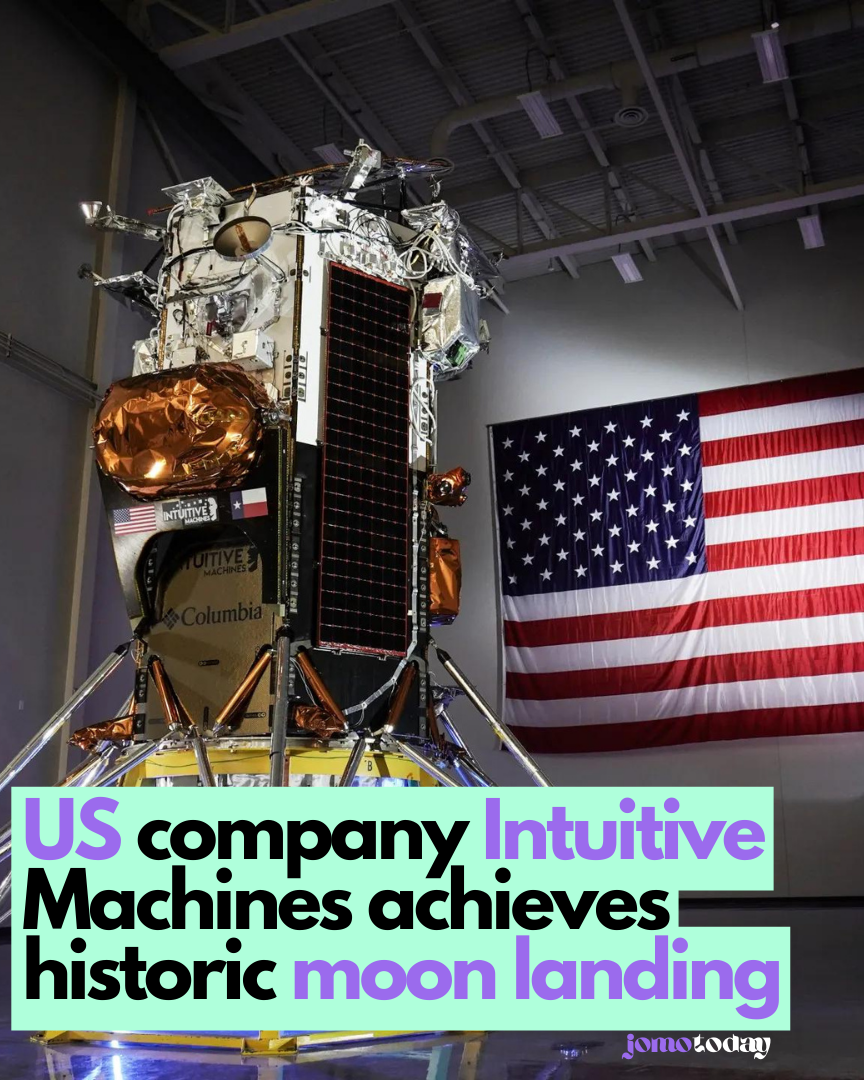An American firm has achieved a historic milestone by becoming the first commercial entity to successfully land a spacecraft on the Moon. Intuitive Machines, based in Houston, accomplished this feat with its Odysseus robot near the lunar south pole. While it took some time for controllers to confirm the landing, eventually a signal was received indicating the craft’s successful touchdown.

Flight director Tim Crain made the announcement, stating, “What we can confirm, without a doubt, is our equipment is on the surface of the Moon and we are transmitting.” The company’s staff erupted in cheers and applause upon receiving the news.
This achievement marks a significant moment not only for the commercial space sector but also for the broader US space program. Intuitive Machines has effectively ended the United States’ fifty-year absence from the Moon’s surface, a hiatus dating back to the last Apollo mission in 1972 when American hardware last touched down on the lunar soil.
Nasa secured space aboard Odysseus for six scientific instruments, and its administrator, Bill Nelson, promptly extended his congratulations to Intuitive Machines for what he hailed as a “remarkable achievement.” “The United States has once again reached the Moon,” he declared. “This marks the inaugural instance in human history where a commercial enterprise, particularly an American one, has orchestrated and spearheaded the journey. Today stands as a testament to the efficacy and potential of Nasa’s collaborative endeavors with commercial entities.”
Before the descent even commenced, controllers faced a critical technical issue that nearly jeopardized the mission. The ranging lasers on Odysseus, designed to calculate the craft’s altitude and velocity, malfunctioned. Fortunately, experimental lasers from NASA were available onboard, and engineers successfully connected them to the navigation computers. Odysseus landed at precisely 23:23 GMT, initially without any signal from the robot. Anxiety mounted as minutes passed, but eventually, a faint communication link was established.
This raised concerns about the lander’s condition. However, within a couple of hours, Intuitive Machines reported that Odysseus was upright and transmitting data, including images.
The chosen landing site was a cratered area adjacent to a 5km-tall mountain range named Malapert, marking the most southern lunar point ever explored by a spacecraft, situated at 80 degrees South.
This location is among the top contenders for potential astronaut visits later in the decade under NASA’s Artemis program.
Within this region lie deep craters perpetually shrouded in darkness, where scientists suspect frozen water may be present.
Lori Glaze, NASA’s director of planetary science, emphasized the significance of the ice on the Moon’s surface, highlighting its potential to reduce the amount of materials needed for missions. She pointed out that utilizing this ice could yield drinkable water and extract oxygen and hydrogen, essential for both fuel and breathing purposes during human exploration endeavors.
Nasa’s Odysseus carries six payloads, comprising both technology demonstrations and scientific instruments. Among the key investigations is one focusing on the behavior of lunar dust, a persistent challenge encountered by Apollo astronauts due to its propensity to scratch and clog equipment.
Nasa scientists aim to gain insights into how landing craft disturb lunar dust, causing it to hang suspended above the surface before resettling. Alongside these scientific endeavors, Odysseus also hosts commercial payloads, including a student camera system from Embry-Riddle Aeronautical University. This system was intended to capture selfie images during the robot’s descent, deploying when Odysseus was approximately 30 meters above the lunar surface.
Additionally, American artist Jeff Koons has affixed a box to the lander containing 125 small stainless steel balls representing the Moon’s phases throughout a month.
Prior to Intuitive Machines’ successful mission, only government space agencies—such as those of the US, the Soviet Union, China, India, and Japan—had achieved soft landings on the Moon. In January, Astrobotic, another American company, attempted a lunar landing with its Peregrine lander but encountered technical issues en route, resulting in the robot being brought back to burn up in Earth’s atmosphere.
Read More: North Korea says secret agent satellite release crashed into sea
Disclaimer:
This content is AI-generated using IFTTT AI Content Creator. While we strive for accuracy, it’s a tool for rapid updates. We’re committed to filtering information, not reproducing or endorsing misinformation. – Jomotoday for more information visit privacy policy






Leave a Comment